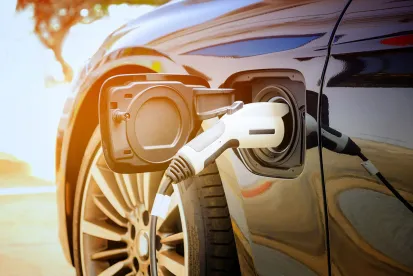Automotive OEMs, suppliers, startups and other participants in the automotive ecosystem have a great deal to do in 2023 as manufacturers begin to move to diversify historical internal combustion engine (ICE) vehicle product offerings with the next, battery-powered, generation of mobility. The growing market shift to vehicle electrification has added new market participants, new technologies, new materials, new supply chains, as well as new regulations and incentives at an accelerating pace. Moreover, a significant number of OEMs face the prospect of entering this different and hyper-competitive market while simultaneously continuing to develop, support, and sell ICE products. During this time of transition, the stakes for suppliers of ICE products now preparing for electrified-vehicle (EV) rollouts have never been higher. Put simply, the next generation of EVs and the decisions by OEMS made as the EV market develops in the upcoming years will drive – or stall – the success of many.
2022 US vehicle sales support this conclusion. While sales fell approximately 8% in 2022, EV sales grew by 65%. Following on the heels of equally impressive sales growth in 2021, OEMs have committed vast resources to developing and rolling out EV offerings as quickly, and at as competitive a scale, as possible. As of November 2022, $33 billion in new auto factory investment was pledged for the construction of new vehicle assembly plants and battery-making facilities in the US, and through 2026 a collective $526 billion is forecast for investment to transition to the manufacture of electric vehicles. Bolstering this change are calls by government institutions, such as the Environmental Protection Agency (EPA), which has proposed new tailpipe emissions limits that could require as much as 67% of all new vehicles sold in the US by 2032 to be electric.
Whether OEMs can successfully balance large-scale investments in an EV future and continued support of ICE products may turn on their ability to derive meaningful value in the near and medium term from legacy ICE product lines. As manufacturers introduce new offerings that support an evolving, electrified industry, they should keep in mind a number of political and legal considerations. Below we discuss just a few of these issues.
1. Closely Track Actions by Governmental Entities
The rapidly evolving role of government in mobility makes it critical to incorporate the public policy dimension into managerial decision-making and strategic planning. New or amended regulations can affect not only the technology choices but also financial options. In 2023 to date, for example:
-
Michigan Governor Gretchen Whitmer announced the launch of “Community EV Toolkits” to offer resources to prepare for the increasing number of electric vehicles to relevant municipal governments, communities and stakeholders.
-
The EPA has proposed new rules that are intended to ensure that electric cars represent between 54 and 60 percent of all new cars sold in the United States by 2030 and 64 to 67 percent by 2032.
-
Inflation Reduction Act rules that took effect in April substantially narrow which consumers may be eligible for EV tax credits.
-
NHTSA announced new technical guidance for impaired-driving prevention tech.
Regular compliance checks, tracking applicable regulations, and establishing effective channels of communication are table stakes for OEMs seeking to successfully navigate EV launches. Incentives can help to drive decisions on whether to capture value now with legacy products or devote resources to future investments and electrified opportunities.
For example, additional EPA Rule Making to be promulgated, or further delayed, in the coming weeks will determine whether electric light vehicle manufacturers may exclusively generate a new category of renewable fuel standard environmental credit. Rulemaking for medium and heavy vehicles may follow, however, spending caps resulting from Federal debt-limit negotiations risk putting the brakes on new rule-making.
While many critical changes remain at the rulemaking stage, the time is now to engage with the government to set workable standards and position businesses for future successes in the EV marketplace. Engaging with trade groups, like MEMA, Original Equipment Suppliers, MichAuto, or the Society of Automotive Analysts are excellent ways to stay abreast of change. OEMs and suppliers also may want to have their own public affairs teams keep them current on developments and make their views and concerns known to regulators.
2. Know Your Technology Rights
Silicon Valley and the Motor City are in closer collaboration (and, at times, competition) than ever as vehicles evolve into rolling supercomputers. Put simply, becoming technology experts is essential for OEMs to successfully navigate the deployment of EV offerings and the industry is entering a critical stage for new development likely to determine certain market advantages for years to come.
Intellectual Property
One critical area that can be overlooked when preparing for an EV rollout is conducting an audit of intellectual property (IP) rights, including patents, copyrights, trade secrets, and “know-how.” New technologies and developments are common in the EV space, and protecting this IP is crucial to recouping investments in research and development. Preventing unauthorized use of protected technology by competitors is a critical step for all market participants.
When supply chain bottlenecks occur, and customers must source production to others with capacity, the risk of IP infringement rises substantially. Alternative suppliers may not be properly licensed to produce certain technology and components, resulting in inadvertent (and sometime even intention) infringement on the IP of others. The potential and extensive legal exposure from such IP infringement can further strain already delicate EV supply chains and generally impact the industry as a whole.
One way to reduce this legal and supply chain risk is to pre-negotiate for the ability to use a supplier’s IP in any situation when that supplier cannot meet the customer’s supply requirements. See “Using Upfront IP Licensing to Reduce Future Supply Chain Disruptions.” If the customer utilizes the supplier’s IP through in-house production or by utilizing another third-party supplier to fill any gaps due to supply chain disruptions or bottlenecks, then the customer runs the risk of infringing upon the supplier’s IP unless there is a license grant, preferably a pre-negotiated licensing agreement in place whereby the customer may do so subject to already agreed-upon conditions and pricing. These types of IP licensing arrangements not only can help mitigate risk for customers and suppliers but also can provide important streams of revenue for suppliers holding IP but struggling to meet the demand for their products.
With heavy government support and incentive programs in favor of bolstering the EV space, OEMs and their suppliers should proactively analyze IP considerations when accepting funding. In particular, suppliers should exercise caution to fully understand which rights funding sources retain, what limitations the sources impose on the funding recipient’s license and use rights, and what effect these limitations will have on the recipient’s ability to manage its own supply chain. Taking the time to conduct audits, full reviews of a supplier’s IP portfolio, and strategically filing for patents or trademarks where necessary is crucial to positioning for industry supply-chain success. Reviewing contract terms and establishing clear agreements with customers and other tiered suppliers that contemplate potential IP issues also will be well worth the up-front investment in process and may even reduce other costs associated with monitoring and enforcement.
Artificial Intelligence
Another rapidly growing area of focus for those dealing with technology rights surrounding the EV market is the utilization of artificial intelligence (AI) in business programs and processes. AI in the EV production space can drastically help optimize efficiency with predictive maintenance and quality control. AI in the supply chain can streamline inventory management and logistical operations in general. AI integration into the customer product space can enhance safety features and improve driving experiences (as well as non-driving experiences with the creation of autonomous EV systems). As with all AI technology, companies need to take great care to ensure they have best practices and policies in place that address AI technology and that their contracts and warranties limit their legal risks for related claims.
3. Don’t Forget About Your Physical Supply Chain
The global semiconductor shortages hurt automotive production and increased prices, but the EV industry also is facing shortages in raw materials, including lithium, nickel, cobalt, and copper, all of which are critical components for battery production. Copper is used extensively in other components for EV motors, and limited mining resources create real potential for market supply strains into the foreseeable future. With the potential emergence of supply chain bottlenecks, if demand for EVs continues to grow and the availability of raw materials fails to keep up, it will become increasingly important for suppliers to manage risks in a diversified supply chain.
In some cases, truly limited worldwide supply will mean that OEMs will have to get creative. Where a readily available supplier is hard to find, M&A strategies and strategic transactions can be exceptionally useful tools for sourcing, streamlined vertical integration, technological innovation as well as cost reduction in the supplier and production space. Strategic acquisitions can also allow companies to gain a strong brand reputation, build a competitive portfolio by acquiring innovative technology and other intellectual property rights, and gain access to new markets and customers. In an article published earlier in 2023, Foley automotive experts reported on using M&A and Other Strategic Transactions to enhance EV launch readiness and reported on key takeaways from the 2022 deal cycle. OEMs and suppliers who are not already preparing for future supply chain disruptions and issues concerning limited resources may be left behind in the race to evolve the industry. Those companies that find new ways to utilize old products or technology will be best positioned to ensure they are capitalizing on all available revenue streams.
* * *
In the coming months and years, the culmination of several cycles of fast-paced technological adoption, new start-ups entering the space, “near-shoring” trends, and uncertain credit markets may create opportunities for entrepreneurial auto companies looking to navigate the EV evolution. OEMs and auto suppliers should leverage governmental opportunities, IP rights and strategic supply chain acquisitions to prepare themselves for navigating future EV rollouts while balancing their current business and technology needs. In the end, the companies that are poised to take quick advantage of EV opportunities through preparation and creativity will ultimately be most successful.






 />i
/>i

